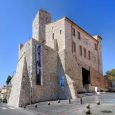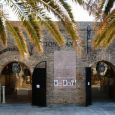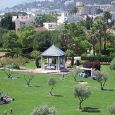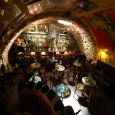Antibes
Advertisement
By train
Both Antibes and Juan les Pins have train stations on the main Nice-Cannes line.
By road
The usual method of driving to Antibes is to take the A8 and exit at the Antibes exit (junction 44) and then taking the winding road down to Antibes. It is possible to approach Antibes along the coastal roads (RN98 and RN7) from Cannes and Nice/Cagnes sur Mer. In summer all these coastal roads can be extremely congested as can the main route from the A8. There are, however, very few alternative methods of access and all of them eventually use one of these roads so if you want to go to Antibes then you pretty much have to expect traffic jams.
There is a regular bus service (no 200) between Cannes, Antibes and Nice from Place Charles de Gaulle. Alternate buses go to Nice Airport and to Cap 3000, a large, pleasant but quite expensive shopping centre near Nice.
By Plane
The Nice airport is the closest airport to Antibes. It is not a long drive from the airport to Antibes.
The Exflora Park
The Exflora Park is a five hectare garden open to the public. Next to the large olive grove, there are different styles of Mediterranean gardens, from ancient Rome to the exuberant Riviera of the 19th century. Fountains and ponds stretch along the terrace, making a waterway 500m long. Antibes is renowned for rose production, and rose bushes line the path leading to the sea. The luxuriance of the exotic garden and palm grove is reminiscent of the belle époque, when English gardeners succeeded in planting flowers that bloom in winter, the season when the aristocracy visited the Côte d'Azur. A little further on is the Théâtre de Verdure, inspired by Italian gardens, and a panoramic viewpoint with a glorious view of the sea and the Iles des Lerins. In the style of Provençal gardens of the 18th century, there is a maze with sculpted hedges. Further on, Islamic gardens are featured, with an orange grove where the ground is patterned with terracotta irrigation pipes similar to those in the celebrated Seville Cathedral in Spain. The vegetable gardens and orchards in the Arsat are planted in hollows as in Morocco to protect them from the sun and maximise shadow and humidity. A representation of a Moroccan house pays homage to the painter MAJORELLE, creator of the beautiful blue garden in Marrakesh. In another area, the winter garden contains plants that flower in winter, such as mimosa and camellias.
The Eilenroc Gardens
Villa Eilenroc was built on a rock in the middle of a virtual desert. The area was transformed into a glorious garden through the patience and talent of Jacques Greber, landscape architect and consultant to the Great Exhibition in New York in 1939. He was commissioned by Mr Beaumont to create this luxuriant park of 11 hectares. The gardens with all their luxuriant vegetation lie thirty metres above the sea with a view across the bay of the Cap. Planted with traditional mediterranean species such as marine and parasol pines, Alep and Canary pines, Cyprus, oaks, olive trees, arbutus, lavender, thyme, rosemary, eucalyptus, ficus, etc., as well as three km of pittosporum hedges, a whole part of the park has been created with plants found in the Antibes area in 1920.
Archaeology Museum
This museum sits atop the Promenade Amiral de Grasse in the old Bastion St Andre, a 17th century fortress. The museum's collection focuses on the classical history of Antibes. Many artifacts, sculptures and amphorae found in local digs and shipwrecks from the harbour are displayed here. The views of the sea and mountains from the promenade are also spectacular.
Naval Museum of Napoleon
Housed in a 17th century stone fort and tower, this museum presents a collection of Napoleonic memorabilia, paintings and naval models. Several wall paintings show historic moments in Napoleon's reign and there are also pieces of his clothing such as one of the hats he once wore.
Picasso Museum
This museum houses one of the world's greatest Picasso collections: 24 paintings, 44 drawings, 32 lithographs, 11 oils on paper, 80 pieces of ceramics, 2 sculptures and 5 tapestries.
La Tour Museum
This small museum in the centre of town brings the contemporary history of Antibes to life through its exhibit of costumes, tools, photographs and other objects used by the local people.
Absinthe Museum
The Absinthe Museum is located in a basement in the Roman foundations of Old Antibes. It is dedicated to the manufacture and appreciation of this green liqueur.
Church of the Immaculate Conception
The central church in Antibes was first built in the 11th century with stones used from earlier Roman structures. Its current façade was constructed in the 18th century and blends Latin classical symmetry and religious fantasy. The interior houses some impressive pieces such as a Baroque altarpiece and life-sized wooden carving of Christ's death from 1447.
Information not available






